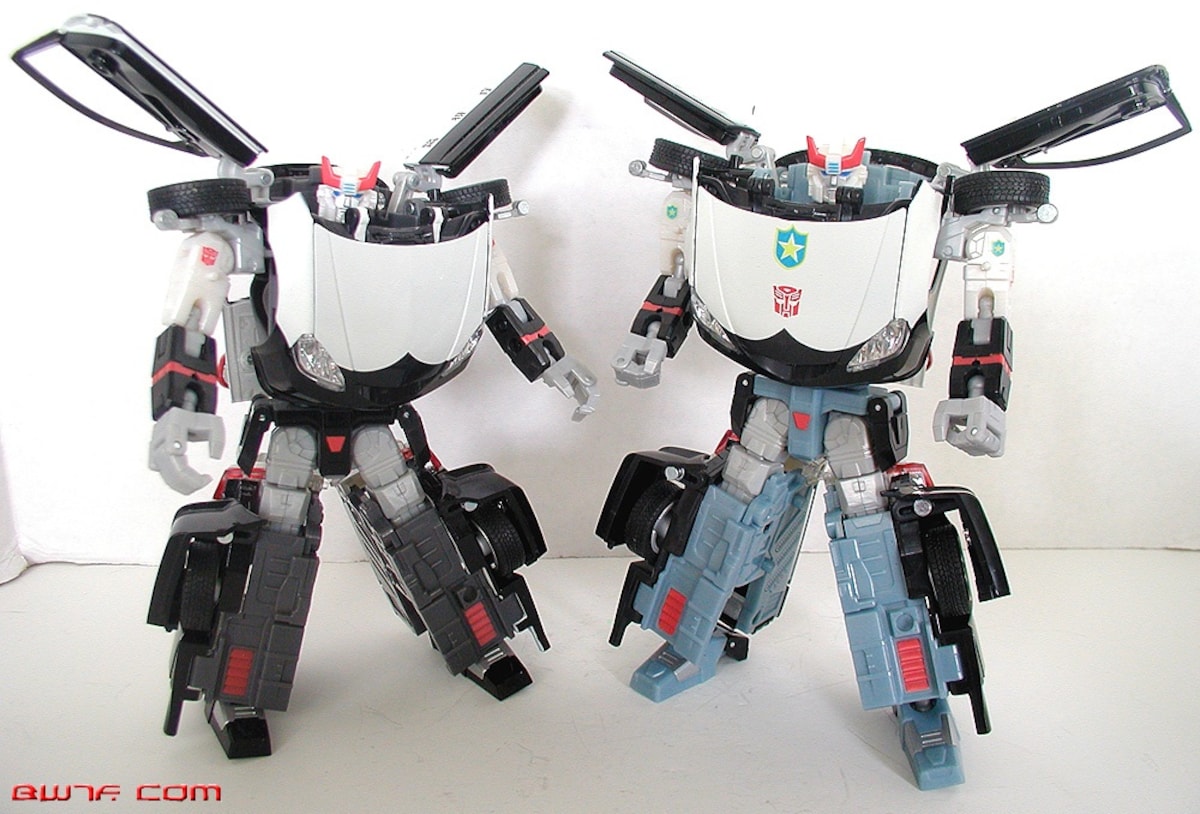Top 10 Reasons to Buy Takara Tomy Transformers
The Transformers franchise started as toys in Japan and then a cartoon in America. While the two regions generally keep the same toys, the Japanese company, Takara Tomy, tends to have better paint applications and more detail. These are 10 examples where Takara Tomy went above and beyond and made amazing collector figures. Let's compare!
By Sugu Althomsons5. Masterpiece Line vs Hasbro Exclusives
Before there were Transformers, there were Diaclones. Diaclones were realistic toys that could transform into humanoid robots that could be piloted by a human (see G1 Ironhide for an example). Hasbro took the existing molds, rebranded them as Transformers, and created a cartoon show to help sell them.
30 years later, Takara Tomy and Hasbro started the Masterpiece line, toys that have enough engineering, sculpting and design to make the toys look like they stepped out of the TV screen and onto your shelf.
https://www.youtube.com/watch?v=gx8AWsv-YrY
As of this writing, Takara Tomy has released 28 figures from 18 molds. Hasbro, on the other hand, has 15 figures from six molds. While both opted for accuracy with respect to the 30-year-old franchise, Takara Tomy has tended toward making its Masterpieces look like the cartoon, while Hasbro has opted toward making its line look more like the original toy.
4. Masterpiece Diaclones
Among the 28 are two characters that don’t have a counterpart from the cartoon, but are from the Diaclone series. The two pictured above are not available through Hasbro. Indeed, the one pictured on the right might not have been made at all due to copyright concerns with Philip Morris International. The original Diaclone mold had a Marlboro logo painted on it, and Philip Morris International had filed an injunction on this Masterpiece. However, Takara Tomy redesigned the logo and was able to release the toy in Japan.
3. Masterpiece Optimus Prime vs Hasbro 20th Anniversary Optimus Prime

http://metalrobot.forumfree.it/?t=51931903&st=15
This is the Masterpiece that started it all. This giant Transformer made fans rejoice as they finally had a large Optimus Prime that was highly detailed, had weight due to the die-cast metal, and was articulated.
For safety reasons, Hasbro (pictured in the front) had short smokestacks on his arms, but Takara Tomy kept them at full length (see the white version and the two on the right). Additionally, Takara Tomy had additional paint and detail work, as usual.
2. Binaltech vs Alternators

http://bwtf.com/toyreviews/alternators/prowl/
In 2003, the Transformers franchise unveiled a line of realistic licensed cars that transform into classic characters. These cars were scaled 1:24 and included interior designs and axled wheels that can turn. The vehicles were so accurate they could be mistaken for model cars on the shelf and not just Transformers toys. The robots were also articulated, with more joints and poseability than the previous lines.
While Hasbro opted for all-plastic toys, Takara Tomy used die-cast metal and rubber tires, resulting in a toy that felt more like a model or even a collector’s piece. Interestingly enough, in the service vehicles (such as the police car pictured above), Takara Tomy even included Japanese details, such as the cherry blossom police logo and Japanese prefectures on the sides of the door. The Hasbro equivalent (pictured above right) only used the car manufacturer and brand logo.
1. Unite Warriors Devastor vs Combiner Wars Devastator
https://www.youtube.com/watch?v=VhwhMS8UEuU&feature=youtu.be&t=56s
Up until now, most of the distinctions between Takara Tomy and Hasbro have been paint differences with some minor retooling. With the Constructicons gift set, Takara Tomy made so many changes to every aesthetic that it’s hard to believe that Hasbro didn’t do these from the beginning.
Takara Tomy's combined mode, Devastator, has a face sculpt that uses more paint than Hasbro, including both a silver forehead and a gunmetal face. While Hasbro has opted to keep the forehead and face the same color. Most strikingly, Takara Tomy added engineering and created a removable visor for the eyes. Hasbro instead created two versions—the retail version with a permanent visor and the San Diego Comic Convention exclusive version without a visor.
Then there are the usual paint differences between the two. Takara Tomy added more paint in arguably more important areas, while Hasbro left them alone. Notably, each individual Decepticon's vehicle mode wheels are different between versions. The Hasbro version left them unpainted, so that the wheels spun around a green plastic axis. However, Takara Tomy painted the rims silver, which may not sound like an important point, but the final result shows how important that small detail can become to the overall aesthetic. Those little decisions all come together to create a product that appears higher in quality.
Finally, each of the individual robot modes have been retooled to give the robots elbows and more poseable arms. None of the Hasbro versions have this, and it's quite baffling why they chose not to. The extra joints on the arms add stability to the combined mode, while also adding extra poseability and emotive capabilities to the individual modes.
With these changes, the Hasbro edition ends up looking like the "beta" version, while the Takara Tomy edition looks finished, the one that is ready for retail.




